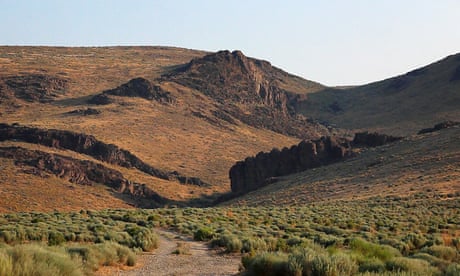Boost for advocates’ group is step further in decades-long fight against mining pollution
By: Cody Nelson THE GUARDIAN theguardian.com
Rita Capitan has been worrying about her water since 1994. It was that autumn she read a local newspaper article about another uranium mine, the Crownpoint Uranium Project, getting under way near her home.
Capitan has spent her entire life in Crownpoint, New Mexico, a small town on the eastern Navajo Nation, and is no stranger to the uranium mining that has persisted in the region for decades. But it was around the time the article was published that she began learning about the many risks associated with uranium mining.
“We as community members couldn’t just sit back and watch another company come in and just take what is very precious to us. And that is water – our water,” Capitan said.
To this effect, Capitan and her husband, Mitchell, founded Eastern Navajo Diné Against Uranium Mining (Endaum). The group’s fight against uranium mining on their homeland has continued for nearly three decades, despite the industry’s disastrous health and environmental impacts being public knowledge for years.
Capitan’s newest concerns are over the Canadian mining company Laramide Resources, which, through its US subsidiary NuFuels, holds a federal mining license for Crownpoint and nearby Church Rock. Due to the snail’s pace at which operations like this can move, Laramide hasn’t begun extraction in these areas, but is getting closer by the day.
While the US legal system hasn’t given them much recourse to fight the mining, Capitan and other community members see new hope in the Inter-American Commission on Human Rights.
Endaum and the New Mexico Environmental Law Center made a substantial evidence filing last week with the commission, alleging that the US government and its Nuclear Regulatory Commission (NRC) have violated their human rights by licensing uranium mines in their communities.
The petition with the commission won’t necessarily offer Endaum legal recourse. However, a favorable recommendation could help them in future legal proceedings against uranium mine projects while also guiding future advocacy on mining policy, said Eric Jantz, senior staff attorney at the New Mexico Environmental Law Center.
He said it would also be a form of vindication: “There is moral value in having an international human rights body lay bare the abuses of the nuclear industry and the US government’s complicity in those abuses.”

While these mines haven’t begun operation yet, the impending threat hangs over local residents’ heads – especially considering the deadly history of mining for the radioactive metal on the Navajo Nation beginning during the cold war.
“There are four generations of Navajo folks who had to deal with existing contamination and who live essentially in the middle of or next door to radioactive waste dumps,” Jantz said. “And the federal government has ignored those communities for the last 70 years.”
The type of mine in question uses in situ leach technology (ISL), also known as in situ reach (ISR), the most common form of uranium extraction. It involves drilling holes into the earth to reach the mineral deposit. A chemical solution is pumped underground, often into the aquifer, to dissolve the uranium deposit. This solution is then pumped back to the surface with the mineral in tow for processing.
“The mineralization at Crownpoint has been previously shown to be amenable to ISR techniques,” Laramide says on its website.
Residents, however, are deeply concerned about the risks of pollution. On the Navajo Nation, most uranium deposits sit in aquifers. Drilling into these aquifers can cause radioactive uranium to leach into the water, contaminating both the underground supply and the water absorbed from the surface.
Laramide did not respond to a request for comment. On its website it says it has an “aquifer exemption on the property” from the Environmental Protection Agency.
More than 500 abandoned uranium mines sit on Navajo Nation land today, each one a potential vector for unleashing more radioactive particles into the air and water, on top of the damage that’s already been done. Uranium mining operations have caused higher rates of cancer, respiratory diseases and kidney conditions among Navajos. From the 1970s to the 1990s, cancer rates on the reservation have doubled, according to its government.
To this day, no mining company has fully cleaned an aquifer it polluted with in situ leach mining, according to the non-profit group Earthworks.
Laramide’s proposed uranium mining operation would involve drilling in the Westwater Canyon Aquifer – which supplies water to about 15,000 Navajo people. For many Church Rock and Crownpoint residents, more uranium mining is simply a nonstarter.
Larry King, a Church Rock resident who used to work on a uranium site, has problems breathing and a heart condition, according to testimony filed with the commission. He’s been advocating against Laramide and other uranium projects for more than two decades and says those fights have robbed him of any normalcy.
“Those 24 years, those should have been the best years, when I could have been enjoying my life. I did not,” King testified.
